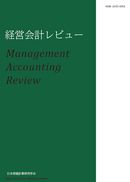Volume 1, Issue 1
Displaying 1-6 of 6 articles from this issue
- |<
- <
- 1
- >
- >|
-
2020 Volume 1 Issue 1 Pages 1-2
Published: 2020
Released on J-STAGE: August 01, 2022
Download PDF (1070K) -
2020 Volume 1 Issue 1 Pages 3-15
Published: 2020
Released on J-STAGE: August 01, 2022
Download PDF (1236K) -
2020 Volume 1 Issue 1 Pages 16-29
Published: 2020
Released on J-STAGE: August 01, 2022
Download PDF (1259K) -
2020 Volume 1 Issue 1 Pages 30-44
Published: 2020
Released on J-STAGE: August 01, 2022
Download PDF (1362K) -
2020 Volume 1 Issue 1 Pages 45-62
Published: 2020
Released on J-STAGE: August 01, 2022
Download PDF (1658K) -
2020 Volume 1 Issue 1 Pages 63-78
Published: 2020
Released on J-STAGE: August 01, 2022
Download PDF (1671K)
- |<
- <
- 1
- >
- >|
